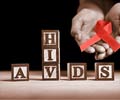- World AIDS Day is observed on the 1st December globally to unite the world population in the war against AIDS and support the millions who are infected as well as remove the associated shame and stigma
- World AIDS Day hopes through its global campaigns to improve efforts at prevention, offer better testing options and easier access to affordable treatment
- ‘Know Your Status’ is the theme of World AIDS Day 2018 to fill key gaps in the availability of HIV testing and overcome hesitation among people to seek testing by introducing self-testing kits
However, gaps still remain in that certain vulnerable, but high-risk sections remain ignorant and fail to seek testing or treatment and remain unaware of their status until they become really sick.
One of the longterm goals being planned is ENDAIDS2030, which hopes to end this global pandemic by the year 2030. Other targets include that by 2020:
- 90 percent of persons with HIV infection should know their status
- 90 percent of those diagnosed should have access to treatment and
- 90 percent of those receiving ARV should achieve viral load reduction
Read More..
Ten Things We Can Do to Help the Global Fight Against AIDS
- Use social media such as Facebook and Twitter to post and extensively share messages about AIDS and using the ‘Know your Status’ slogan and the red ribbon (global symbol of HIV/AIDS) to improve awareness among the general population.
- Wearing a red ribbon on your dress or wearing red to work. Decorating the office space or the building with red colored lights or flowers.
- Bring out educational broadcasts and messages in print and visual media about AIDS and the available resources to prevent and treat HIV infection.
- Organize skits or roadside plays in the community to educate about AIDS and to remove the associated stigma and mental trauma.
- Distribute leaflets in prominent public places with messages about AIDS and available testing methods and treatments to improve the reach among the general population.
- Organizing educational talks, seminars and webinars in educational institutions to raise awareness about HIV/AIDS infection among students and ways to prevent and protect themselves.
- Make a personal contribution to AIDS awareness campaigns or raise funds through sale of red-themed stuff such as mugs, pins, brooches, T-shirts and donate the proceeds.
- Organize an awareness event such as a fun-filled gala event, walkathon, marathon or inspirational talk by the person living with AIDS and their success story in overcoming the disease and social stigma.
- Doctors and clinics should offer HIV counseling, testing and treatment to encourage the general public and high-risk population to seek medical help.
- Governments should send health personnel to visit prisons and communities of sex workers and other high-risk but marginalized groups and educate and encourage them to seek medical advice and treatment.
HIV/AIDS Key Facts
- HIV (Human Immunodeficiency Virus) infection is a viral infection that affects the immune system and makes the person weak and susceptible to several types of infections
- Infection can spread through sexual contact, via blood transfusion of infected blood, handling contaminated blood and blood products and from a pregnant woman to her baby
- AIDS or Acquired Immunodeficiency Syndrome refers to the end stage of HIV infection marked by severe opportunistic infections and HIV associated cancers. With proper early treatment progression to AIDS can be prevented
- Nearly half of new infections (47%) occur amongst high-risk groups (see above) and their partners who remain discriminated against and kept out of health care access. In sub-Saharan Africa, a majority of new cases (70%) occurs in adolescent boys and girls
- Only 75 percent of persons with HIV infection are aware of their status and not everyone who is aware of their status has access to antiretroviral treatment
- Incidence of HIV infection and related deaths has fallen globally by more than one-third since 2000 due to concerted efforts of national programs and support by non-governmental organizations
Measures for Prevention of HIV Infection
- Basic measures such as access to condoms to prevent transmission of infection
- Providing pre-exposure prophylaxis to high risk groups with increased risk of HIV infection
- Voluntary male circumcision which offers 60 percent protection from HIV for life has helped over 20 million young boys and men in high disease burden regions of Africa
- Access to self-testing kits to enable more persons to go for testing
- Provision and access to low-cost ARV therapy
- Provision of holistic health care with linking of HIV treatment with services that treat associated conditions such as TB, hepatitis, heart disease and psychological support
- Public education to remove social stigma and fear psychosis associated with HIV infection and discrimination against affected persons
References:
- HIV/AIDS Key facts - (http://www.who.int/news-room/fact-sheets/detail/hiv-aids)
- About World Aids Day - (https://www.worldaidsday.org/about/)
Source-Medindia
















